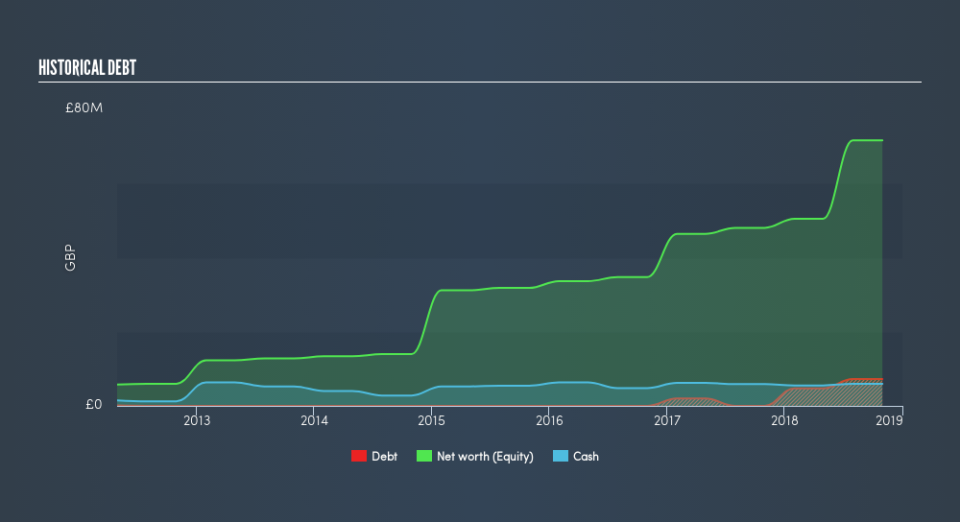What Investors Should Know About Ideagen plc’s (LON:IDEA) Financial Strength

Investors are always looking for growth in small-cap stocks like Ideagen plc (LON:IDEA), with a market cap of UK£293m. However, an important fact which most ignore is: how financially healthy is the business? Understanding the company’s financial health becomes vital, as mismanagement of capital can lead to bankruptcies, which occur at a higher rate for small-caps. The following basic checks can help you get a picture of the company’s balance sheet strength. Nevertheless, this is not a comprehensive overview, so I recommend you dig deeper yourself into IDEA here.
IDEA’s Debt (And Cash Flows)
In the previous 12 months, IDEA’s rose by about UK£7.3m . With this increase in debt, IDEA currently has UK£5.9m remaining in cash and short-term investments to keep the business going. Additionally, IDEA has produced UK£11m in operating cash flow over the same time period, resulting in an operating cash to total debt ratio of 148%, meaning that IDEA’s debt is appropriately covered by operating cash.
Does IDEA’s liquid assets cover its short-term commitments?
Looking at IDEA’s UK£33m in current liabilities, the company may not have an easy time meeting these commitments with a current assets level of UK£21m, leading to a current ratio of 0.64x. The current ratio is the number you get when you divide current assets by current liabilities.
Does IDEA face the risk of succumbing to its debt-load?
With debt at 10% of equity, IDEA may be thought of as appropriately levered. IDEA is not taking on too much debt commitment, which can be restrictive and risky for equity-holders. We can test if IDEA’s debt levels are sustainable by measuring interest payments against earnings of a company. Ideally, earnings before interest and tax (EBIT) should cover net interest by at least three times. For IDEA, the ratio of 14.81x suggests that interest is comfortably covered, which means that lenders may be inclined to lend more money to the company, as it is seen as safe in terms of payback.
Next Steps:
IDEA’s high cash coverage and conservative debt levels indicate its ability to utilise its borrowings efficiently in order to generate ample cash flow. But it is still important for shareholders to understand why the company isn’t increasing its cheaper cost of capital to fund future growth, especially if meeting short-term obligations could also bring about issues. I admit this is a fairly basic analysis for IDEA’s financial health. Other important fundamentals need to be considered alongside. I suggest you continue to research Ideagen to get a more holistic view of the stock by looking at:
Future Outlook: What are well-informed industry analysts predicting for IDEA’s future growth? Take a look at our free research report of analyst consensus for IDEA’s outlook.
Valuation: What is IDEA worth today? Is the stock undervalued, even when its growth outlook is factored into its intrinsic value? The intrinsic value infographic in our free research report helps visualize whether IDEA is currently mispriced by the market.
Other High-Performing Stocks: Are there other stocks that provide better prospects with proven track records? Explore our free list of these great stocks here.
We aim to bring you long-term focused research analysis driven by fundamental data. Note that our analysis may not factor in the latest price-sensitive company announcements or qualitative material.
If you spot an error that warrants correction, please contact the editor at editorial-team@simplywallst.com. This article by Simply Wall St is general in nature. It does not constitute a recommendation to buy or sell any stock, and does not take account of your objectives, or your financial situation. Simply Wall St has no position in the stocks mentioned. Thank you for reading.

